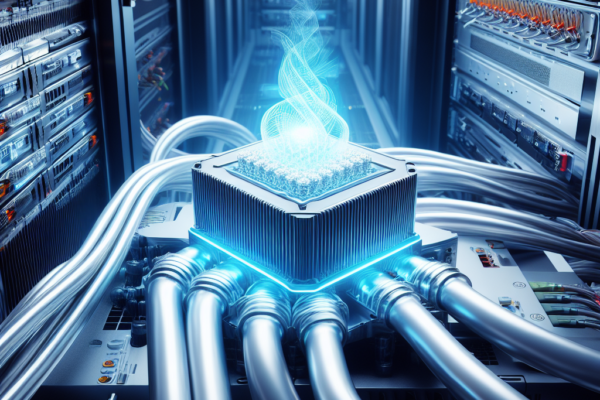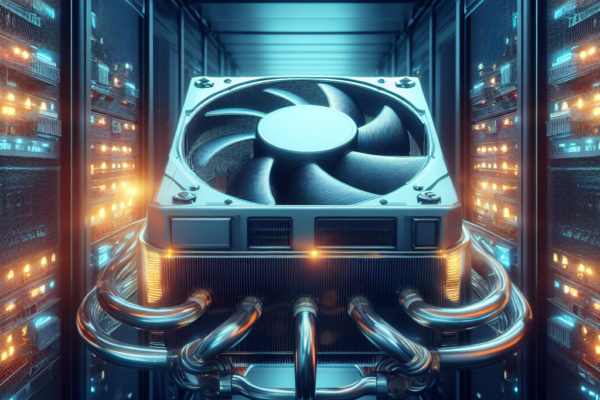Data Center: Direct-to-Chip Cooling
Cooling systems that target components that are centers of heat production can more efficiently dissipate heat. That’s why direct-to-chip cooling is becoming an increasingly attractive cooling strategy in data centers.
While direct-to-chip cooling can target servers’ hottest components, high cost and the risk of cooling system failure mean that this is not always the right solution.

Direct-to-Chip Cold Plate Cooling:
Direct-to-chip cooling systems require several components:
- A cooling liquid, which is typically a dielectric fluid engineered for direct-to-chip cooling
- A plate that the liquid can pass through
- A circulator that moves the liquid
- A thermal interface material, which helps conduct heat from the source to the cold plate
Together, these components work in a relatively straightforward way: The heat from the CPU or other heat source moves into the cold plate and is then carried away by the circulating liquid.
Benefits of Direct-to-Chip Cooling
The main benefit of direct-to-chip cooling is that it removes heat faster and uses less energy than more traditional cooling systems that you’d find in data center designs, such as those that circulate chilled air through server racks.
Rather than targeting specific heat sources, traditional air cooling systems blow chilled across an entire array of equipment. Much of this air passes over components, such as network interfaces and the outlying parts of mainboards, that are not major sources of heat production. This means that cooled air is effectively wasted.
In contrast, direct-to-chip cooling systems can pinpoint the specific components that generate heat. As a result, they can dissipate more heat with less energy, which is a win from a sustainability perspective (because lower energy consumption reduces data center carbon output) as well as a reliability perspective. The better systems are at dissipating heat, the lower the risk of IT failures due to overheating.
Direct-to-Chip Cooling Challenges
While direct-to-chip cooling offers numerous benefits, the technology is subject to some challenges and limitations:
- Cost: Chilled air systems are almost always less costly to implement and maintain than direct-to-chip systems, which require more expensive and complex components.
- Leakage risk: Fluids inside direct-to-chip systems can leak. Leakage typically is not a major threat to IT equipment because the fluids are not conductive. But it will cause cooling systems to fail, leading to possible overheating. Data center operators worried about leakage risks may opt for immersion cooling, which is less prone to leakage because fluid is not contained in small, fragile plates.
- Environmental impact: The fluids that flow through direct-to-chip systems are often not environmentally friendly, which means there are pollution risks associated with these systems.
- Uncooled components: Because direct-to-chip systems only cool major heat sources, there is a risk that other parts of a server, such as hard disks, could overheat. This is another reason why some data center operators opt for immersion cooling, which cools all parts of a system.
If you’re worried about upfront costs, a more traditional air cooling system is a better solution than direct-to-chip cooling. Note, though, that over the long term, direct-to-chip cooling can prove more cost-effective than air cooling due to lower energy consumption. Air cooling systems are also not prone to leakage risks.
Meanwhile, immersion cooling is less risky overall, although it’s also usually more expensive to implement than direct-to-chip cooling. That said, for large-scale infrastructures (meaning those that involve hundreds or thousands of servers), immersion cooling may be about the same or even less expensive to install than direct-to-chip cooling, which is best suited for smaller-scale setups.
Direct-to-chip cold plate cooling systems must be tailored for the specific types of equipment they support, you can’t go out and buy this type of solution off-the-shelf. You’ll want to work with a vendor that can design a system based on your specific data center and servers.

